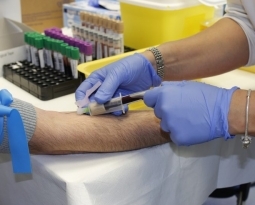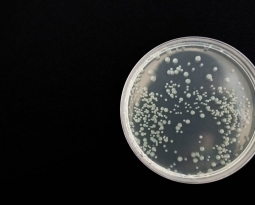New Hampshire Patent of the Month – March 2022
When using a prosthetic, the piece which connects to the limb needs to be specially designed to limit discomfort and prevent pressure points. Typically, these are designed for each individual user by taking a mold or 3D image of the limb. Some attempts at making these more comfortable have introduced a “windowing” approach. This just means holes are cut into the rigid material to allow a softer material to poke through and make contact with the skin rather than the hard plastic. Unfortunately, these systems are still known to have challenges and cannot reliably adapt to the varying human anatomy.
Bionic Skins, LLC has developed an improved method of fabricating these prosthetic connection points. Their method combines both biomechanical and physiological properties that better reflect human anatomy. To achieve this, their fabrication requires 3 different steps. The first is a series of biological data acquisition and modeling to accurately represent the individual user. This gathers data around the limb shape, skin strain characteristics from body movement, and sensitivities to applied pressure.
Once this data has been gathered, the next step is to quantitatively map the model to an interface model, or a digital representation of both shape and impedance properties. In a third step, this model is then fabricated into a physical model and then a final model. The first step is where the magic happens. To get the most accurate results, they’ve used sensitive probes, actuated by a professional. The operator pushes these force sensitive proves on the limb to measure tissue deflection forces. A series of sensors including gyroscopes, magnetometers, and accelerometers are used to better represent the tissue deflection force data. This information is then used to inform the viscoelastic properties to strive for in the material the model will be made of. For instance, greater cushion in one area to protect a particularly sensitive spot or more rigid support in another. The more care and accuracy that can be put into the fabrication, the better the prosthetic connector will be.
Are you developing new technology for an existing application? Did you know your development work could be eligible for the R&D Tax Credit and you can receive up to 14% back on your expenses? Even if your development isn’t successful your work may still qualify for R&D credits (i.e. you don’t need to have a patent to qualify). To find out more, please contact a Swanson Reed R&D Specialist today or check out our free online eligibility test.
Who We Are:
Swanson Reed is one of the U.S.’ largest Specialist R&D tax advisory firms. We manage all facets of the R&D tax credit program, from claim preparation and audit compliance to claim disputes.
Swanson Reed regularly hosts free webinars and provides free IRS CE and CPE credits for CPAs. For more information please visit us at www.swansonreed.com/webinars or contact your usual Swanson Reed representative.

















